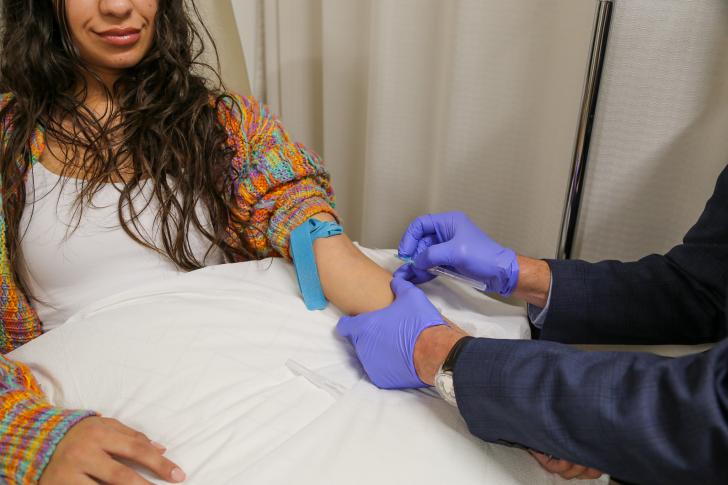How Safe is Your Sunscreen?

Published
Dust off your boats, boots and bikes because summer and sunshine are just around the corner. That means it’s also time to stock up on sunscreen. Kris Somol, ND, who sees patients at Bastyr University's teaching clinic, Bastyr Center for Natural Health, takes a fresh look at the importance of sun protection and the safety of sunscreens on today’s market.
Should people in the Northwest be concerned about sun exposure?
According Dr. Somol, here in the cloudy Northwest, the rate of melanoma is actually higher than the national average. Cumulative sun exposure is the biggest contributing factor in the development of skin cancer, but other factors can come into play as well. Dr. Somol explains that behaviors that create free radicals in the body and promote oxidative stress – such as poor diet, low activity or smoking – can make you more susceptible to damage from the sun. Use of tanning beds, especially before the age of 35, can increase your skin-cancer risk later in life by 250 percent. On the other hand, a diet rich in antioxidants – including plenty of colorful fruits and vegetables – can help you lower your risk of skin cancer. “Eating a diet high in orange and red carotenoids seems to be protective against skin cancer,” notes Dr. Somol.
Does sunscreen reduce cancer risk?
Using sun protection is crucial for reducing the risk of certain skin cancers, but Dr. Somol recommends reading ingredient labels carefully when choosing a product. “Some sunscreens may actually promote the development of cancer because they contain chemicals that lead to increased free radicals,” she reports. The most common culprit is oxybenzone, found in roughly 42 percent of sunscreens. Oxybenzone causes allergic skin reactions and hormone disruption and is likely to actually increase your risk of skin cancer. (Consult the table below for other common sunscreen ingredients to avoid.)
Which sunscreen ingredients are safer?
Seek out sunscreens that include zinc oxide or titanium dioxide. Products containing zinc oxide and titanium dioxide provide about 20 percent better UV protection than other sunscreens. Plus, products with these safer ingredients generally contain fewer of the harmful ingredients listed in the table. Zinc oxide and titanium dioxide are now available in nanoparticle form and these products will protect your skin without the telltale opaque white appearance. Dr. Somol is careful to note however, that consumers should avoid aerosol versions of zinc and titanium products because they can be harmful if inhaled. The Environmental Working Group (EWG) provides a vast and detailed database of sunscreen ratings on its website: www.ewg.org.
How can you stay vigilant against skin cancer?
Monitor your own skin for changes and make sure your annual medical exam includes a check for skin changes.
| Ingredient | Risk | Other Information |
|---|---|---|
| Oxybenzone | Hormone disruptor. Releases reactive oxygen (may cause cancer). Allergic reactions. Estrogen-like effects. | Directly absorbed into bloodstream. Several countries ban the sale of sunscreens that contain this ingredient, because it may be harmful to aquatic life. Amount allowed in the US which is up to 6 percent - 2.2 percent in Europe. |
|
Octinoxate (Octyl methyoxy-cinnamate) |
Animal studies have shown the chemical has hormone effects on the metabolic system and affects thyroid hormone production. | Several countries ban the sale of sunscreens made with octinoxate, because they may be harmful to aquatic life. |
| Homosalate | The FDA has proposed that there is insufficient data to evaluate whether it is safe and effective to use in sunscreens. Homosalate has been found to penetrate the skin, disrupt hormones and produce toxic breakdown byproducts over time | A recent opinion from the European Commission found that homosalate was not safe to use at concentrations up to 10 percent and recommended a maximum concentration of 1.4 percent, because of concerns for potential endocrine disruption (SCCS 2020). The FDA allows U.S. sunscreen manufacturers to use it in concentrations up to 15 percent. |
| Octisalate | Readily absorbs through the skin at levels 10 times more than 0.5 nanograms per milliter, the FDA’s cutoff for systemic exposure. | A case report showed that the chemical has been linked to allergic contact dermatitis (Singh 2007). Analysis of high throughput screening assays by the Environmental Protection Agency suggests octisalate may have endocrine effects. |
| Octocrylene | causes relatively high rates of skin allergies. The European Commission recently concluded that although there was some evidence of octocrylene’s endocrine-disrupting potential, current use concentrations up to 10 percent were considered safe. | It has been linked to aquatic toxicity, with the potential to harm coral health (Stein 2019), and it is often contaminated with the known carcinogen benzophenone. |
| Avobenzone | Can disrupt the endocrine system and has been shown to block the effects of testosterone in cellular studies. | Because avobenzone is not stabile, it must be paired with other ingredients that act as stabilizers to prevent it from breaking down in the sun. Breakdown products of avobenzone can cause allergic reactions |
| Titanium dioxide or zinc oxide | The FDA proposed that both titanium dioxide and zinc oxide be classified as safe and effective. Evidence suggests that few if any zinc or titanium particles penetrate the skin to reach living tissues. | Titanium dioxide is classified as a possible human carcinogen by the International Agency for Research on Cancer, because of the potential of exposure through inhalation. For this reason, powdered or spray formulations containing titanium dioxide are of concern.. |
Source: Environmental Working Group


